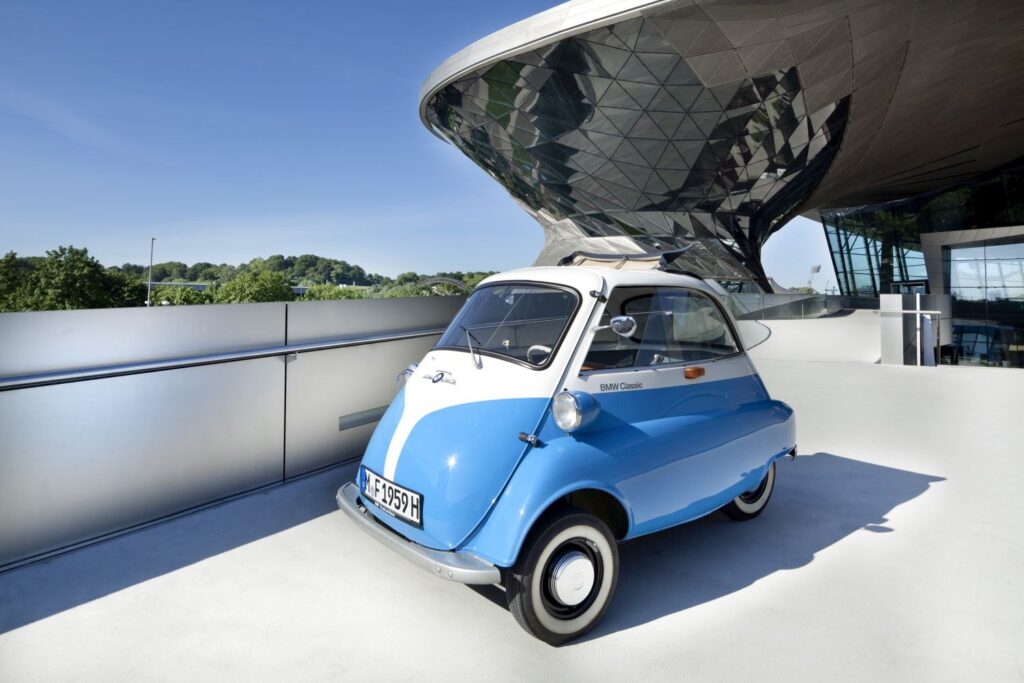
Iconic bubble car:
The 1955 BMW Isetta is one of the most famous microcars ever produced and stands out as a symbol of post-war mobility in Europe. Let’s take a look at the history and specifications of this unique automobile:
History: “How the 1955 BMW Isetta saved BMW”
BMW licensed the Isetta design from the Italian firm Iso SpA in 1955. The company, which was then best known for making motorcycles and luxury vehicles, saw potential in the Isetta at a time when it was struggling financially. The cheap and cheerful Isetta was seen as a means to save the company, and it did.
BMW didn’t merely produce the Italian design, but they engineered their Isetta extensively. The first Isetta rolled off BMW’s line in April 1955. The car was an instant hit in Germany and other parts of Europe, mainly due to its fuel efficiency and affordable price.
Specifications:
Engine: The original Italian version used a two-stroke engine, which BMW replaced with their 247 cc four-stroke motorcycle engine, borrowed from the BMW R25/3. This single-cylinder, air-cooled engine produced a modest 12 horsepower at 5800 rpm and was mated to a four-speed manual transmission.
Performance: With such a small engine, performance was not the Isetta’s main selling point. However, it was still capable of reaching a top speed of 53 mph (85 km/h) and could do 0-50 mph in about 30 seconds. It was highly fuel-efficient, with an estimated fuel economy of around 50-70 mpg, which was a strong selling point in the post-war economy.
Body & Chassis: The BMW Isetta maintained the distinctive “bubble car” design of the original, featuring the unique front-opening door. The vehicle was a two-seater with a convertible canvas sunroof, and for its size, offered a surprisingly comfortable interior. It was a monostructure design, meaning the frame and the body were one piece. The car was extremely compact, measuring only 7.5 feet long and 4.5 feet wide.
Suspension & Brakes: BMW made significant changes to the suspension system from the original Iso design. It featured independent suspension at the front with a leading arm and coil springs, while at the rear, it had a semi-elliptical leaf spring. The Isetta was equipped with drum brakes on all wheels, sufficient for its size and weight.
The 1955 BMW Isetta proved to be the right car at the right time for BMW. Not only did it save the company from financial ruin, but it also became an icon of its era. Today, it remains a beloved piece of automotive history, symbolizing a time of innovation, change, and recovery in post-war Europe.
